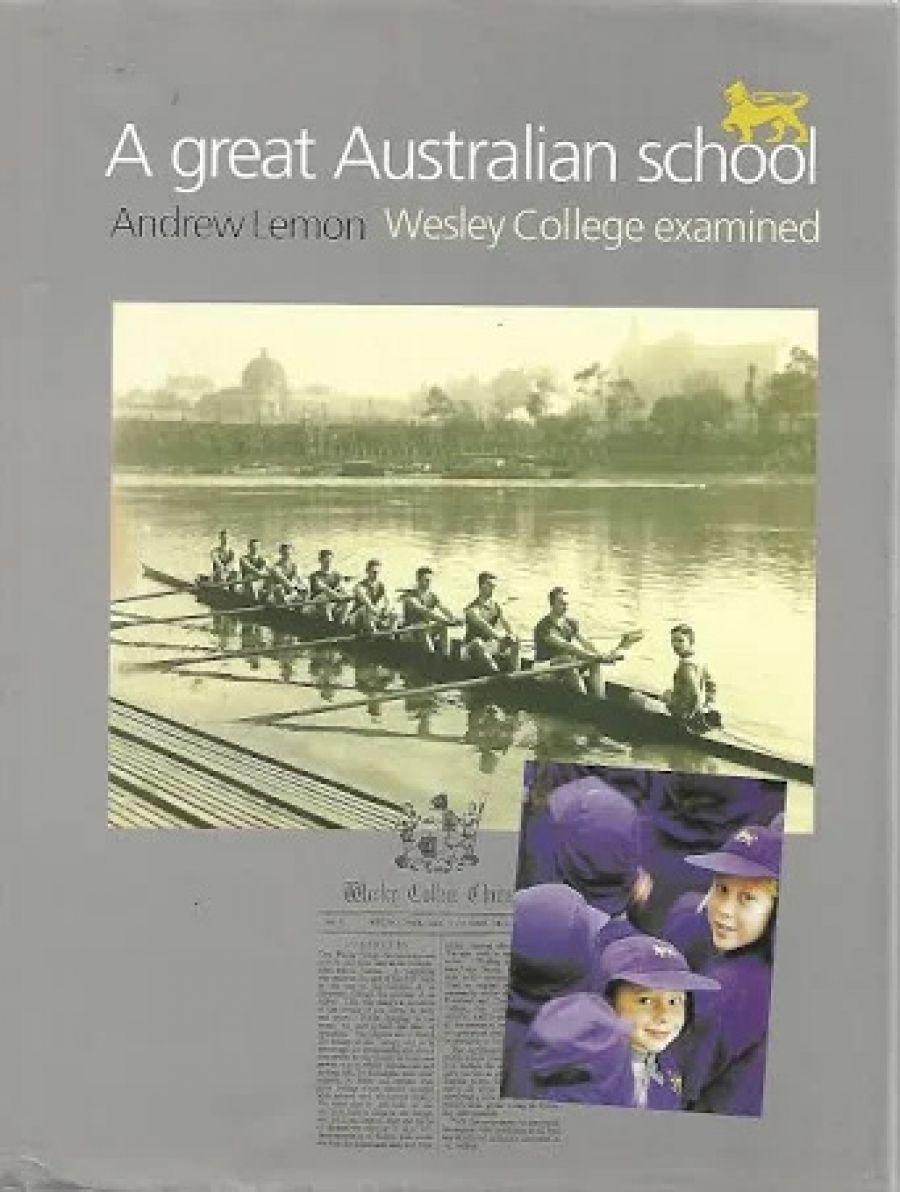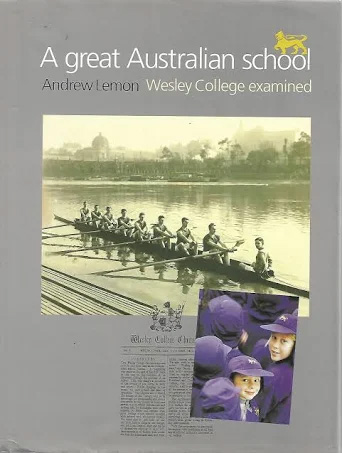
- Free Article: No
- Contents Category: Education
- Review Article: Yes
- Article Title: The Bastion on St Kilda Rd
- Online Only: No
- Custom Highlight Text:
Wesley College, Melbourne, has a long and intriguing history. Established in 1866, Wesley was off to a slow start that left it, for much of its history, trying to foot it with slightly older, considerably wealthier and rather more prestigious rival public schools (as they were then known, distinguishing them from schools run for profit by private individuals). In its first ‘heyday’ in the opening decades of the twentieth century, under the charge of the colourful L.A. Adamson, Wesley epitomised the Australian public school system. It embodied the transfer to Australia of the values of England’s élite schools, preaching conservative social values, and combining a love of sports with a devotion to intellectual pursuits and a commitment to a national agenda that emphasised imperial loyalty and martial willingness.
- Book 1 Title: A Great Australian School
- Book 1 Subtitle: Wesley College examined
- Book 1 Biblio: Helicon Press, $75 hb, 628 pp
- Book 1 Cover Small (400 x 600):

- Book 1 Cover (800 x 1200):

In the competition with its rivals, however, Wesley was always struggling to ‘hold the line’, which is one reason why the school was prepared to reinvent itself so dramatically from the 1970s onwards, particularly under the guidance of its principal from 1971 to 1991, the remarkable David Prest. Wesley has now become distinguished for its enormous size (the school ranges over three campuses), for the multicultural nature of its student body, and for its willingness to combine new and innovative educational ideas with a lofty set of student-centred principles. The Wesley College name, and the façades on its oldest campus on St Kilda Road, may be old in Australian terms, but they belie a modern and progressive school.
The main focus of Andrew Lemon’s work is on this period of reinvention, which also conveniently addresses the period since Geoffrey Blainey, James Morrissey and S.E.K. Hulme published their 1967 centenary history. As Lemon says, the remarkable transformation of the school in the period since then requires a history of its own. Lemon’s point is a fair one, and he makes a more than fair job of covering the Prest years and those since, narrating and commenting on the sometimes anguished, sometimes controversial, but undeniably profound metamorphosis that has been the recent Wesley story.
Lemon, however, takes a rather wider overall brief than simply covering the last thirty to forty years. Indeed, his history stretches back to Wesley’s origins. The two principal motivations for extending backwards to times already covered in earlier works are what give the book its flavour. The first is the desire for a monumental history. This is a large, lavishly illustrated and expensively produced tome that runs to a little over six hundred pages. Works of such dimension are designed not only to tell people of Wesley’s history, but to pronounce that Wesley has a significant history. In the ongoing rivalry between Melbourne’s élite secondary schools, works such as this are status symbols as much as they are texts. Can it be just coincidence that Lemon’s book appears only three years after Weston Bate and Helen Penrose’s history of Melbourne Grammar, and just three years after James Mitchell’s history of Scotch College?
The problem with such monumental histories is that their overall shapes are fairly predictable. With the exception of moments of adversity, such histories are invariably presented as the triumph of a succession of visionaries and visions and are invariably presented in a top-down fashion. They reify the schools and grant centre stage to a succession of headmasters and principals, most of whom will be lauded to one degree or another. Lemon states at the outset that he wishes to avoid lists of school captains and cricket victories, and that school histories need not be unduly deferential or stodgy. Yet this is hardly a demanding benchmark. As a history by Wesley, of Wesley and for Wesley, Lemon’s work is deserving of high praise for its thorough research and comprehensive coverage combined with interesting anecdotes. But where are the voices of the boys, aside from extracts from surveys of old boys, which is hardly the same thing? Where is the analysis of social outlooks, or of power relations? They appear from time to time, but Lemon remains a prisoner to the trope, and the work will consequently be of only limited interest to those with no connection to Wesley.
The second motivation driving Lemon’s work appears to be a desire to overthrow heresies that came to the fore in the centenary history (namely, Adamson’s excessive fondness for his boys) and in Brian Lewis’s memoir Our War: Australia during World War I (1980), in which he suggested that a generation of young Australians, including Lewis’s elder brother, Owen, had been led like lambs to the slaughter by the ideologies preached by Adamson’s generation, and by none more fervently than Adamson himself.
In neither case, however, is Lemon entirely successful. His defence of Adamson’s alleged sexual practices is hardly convincing, while his treatment of Lewis’s criticisms supply the only real lowlight of an otherwise commendable, if limited, school history. Lemon notes that an earlier biographer of Adamson had fairly commented that Adamson grieved over his lost boys and ‘died daily’. In a thoughtless moment that Lemon will no doubt regret, he notes that ‘Owen Lewis, on the other hand, died once’. To equate Owen Lewis’s sacrifice of his life with Adamson’s grief, and to suggest that Adamson is thus somehow exculpated, borders on the offensive.
That is, admittedly, a rare lapse. Within the limits of its brief, Lemon’s history is an impressive piece of detailed research and sustained narrative.


Comments powered by CComment